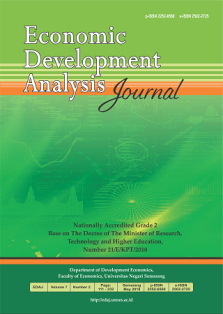Labor Supply Analysis: Case Study of Married Women Workers
Abstract
Women in the labor market contribute to labor as part of the production factors in economic activities. Women's participation in the labor market cannot be separated from their role and status in the family. Personal characteristics, socio-economic conditions, and demographics influence women's decisions to work. The research aim is to analyze the supply of married women workers in Indonesia. The data used is secondary data originating from Sakernas February 2022. The method used is logit regression. The variables used in this research are the supply of married women workers, location, household members, women's age, women's education, employment status, wages, working hours, and training. The research results show that the variables of women's age, education, working hours, and training positively and significantly influence the supply of married women workers. The variables location, number of household members, employment status, and wages negatively and significantly influence the supply of married women workers. In general, the tendency of married women to work is higher among married women who live in rural areas, have few household members, are older, have a higher level of education, formal employment status, low wages, working hours are high, and have training experience.


